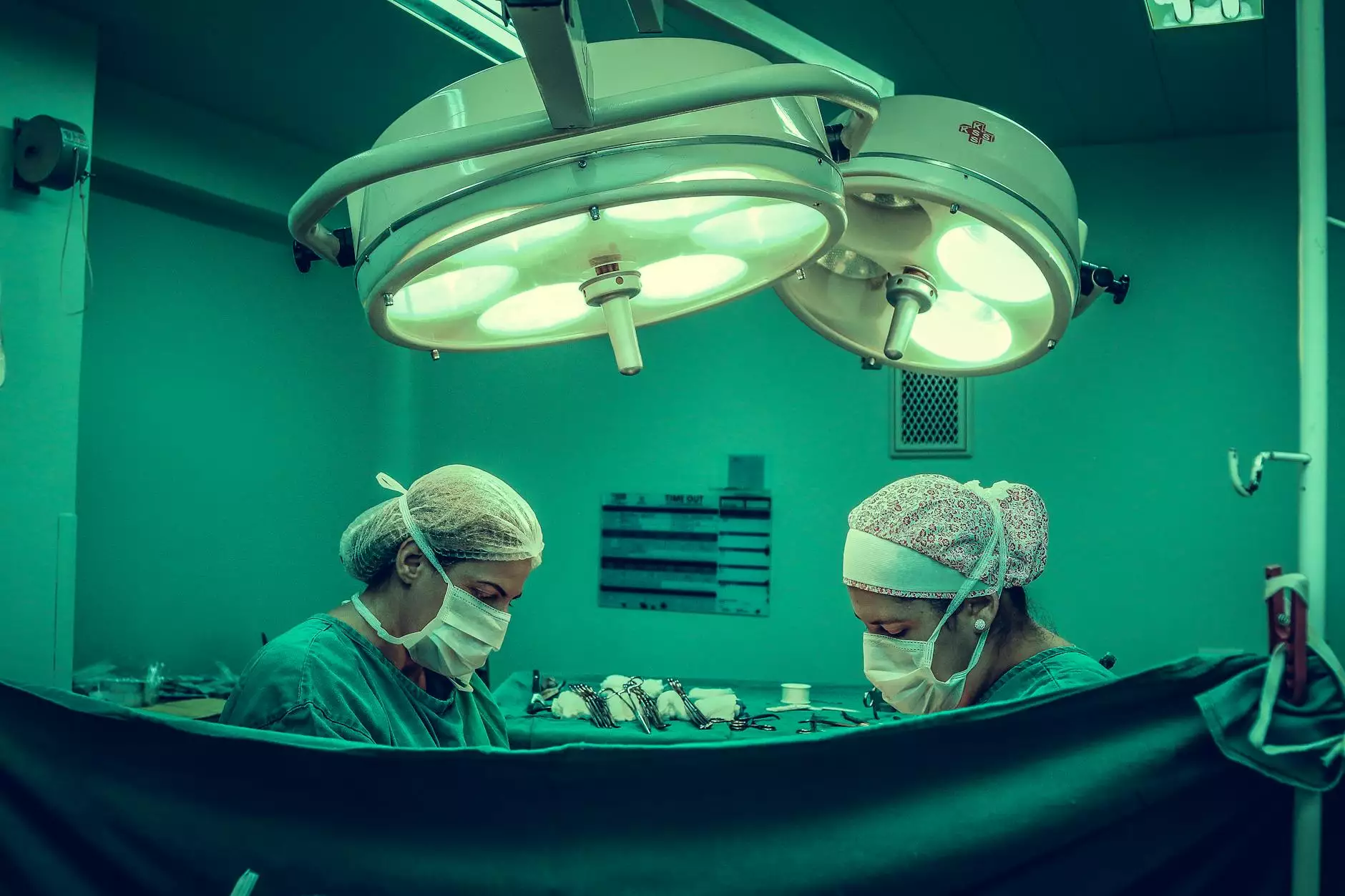Comprehensive Guide to Myoma Surgery Procedure by Expert Obstetricians & Gynecologists

Uterine fibroids, also known as myomas or leiomyomas, are benign tumors that develop within the muscular wall of the uterus. These growths are quite common among women of reproductive age and can cause a range of symptoms that significantly impact quality of life. When medical management does not alleviate symptoms or when fibroids interfere with fertility and pregnancy, surgical intervention becomes necessary. In this detailed guide, we explore the myoma surgery procedure in depth, highlighting the latest techniques, preparation steps, post-operative care, and what patients can expect from experienced obstetricians and gynecologists.
Understanding Uterine Fibroids and the Need for Surgery
Uterine fibroids are benign smooth muscle tumors that can vary greatly in size, number, and location within the uterus. Though many women remain asymptomatic, some experience heavy menstrual bleeding, pelvic pain or pressure, frequent urination, and reproductive challenges. When symptoms become severe or fibroids grow large enough to distort the uterine structure, surgical removal becomes a compelling option.
Indications for myoma surgery procedure include:
- Heavy, persistent menstrual bleeding leading to anemia
- Pelvic pain or pressure oppressive enough to impair daily activities
- Large fibroids causing bulging of the abdomen or distorting uterine anatomy
- Infertility associated with fibroids obstructing the fallopian tubes or affecting implantation
- Persistent or recurrent fibroids despite medical treatment
- Personal preference for definitive removal of fibroids, especially when planning pregnancy
Types of Myoma Surgical Procedures
Technological advancements and increased understanding of fibroid pathology have expanded the surgical options available. The choice of procedure depends on fibroid size, number, location, patient age, and reproductive goals.
1. Myomectomy
Myomectomy is a surgical procedure to remove fibroids while preserving the uterus. It is preferred for women wishing to maintain fertility or avoid hysterectomy. Myomectomy can be performed via different approaches:
- Hysteroscopic Myomectomy: Suitable for submucosal fibroids located within the uterine cavity. Performed using a hysteroscope inserted through the vagina and cervix.
- Laparoscopic Myomectomy: Minimally invasive technique utilizing small abdominal incisions with a laparoscope. Ideal for accessible intramural and subserosal fibroids.
- Open Abdominal Myomectomy: Conventional open surgery typically reserved for large or multiple fibroids, or when other approaches are unsuitable.
2. Uterine Artery Embolization (UAE)
Uterine artery embolization is a minimally invasive procedure where the blood supply to fibroids is blocked, causing them to shrink. It does not involve traditional surgery but is an effective alternative for women who prefer to avoid invasive operations.
3. Hysterectomy
In cases where fibroids are large, numerous, or cause significant symptoms, a hysterectomy — complete removal of the uterus — may be performed. This is considered when fertility preservation is not a concern.
The Myoma Surgery Procedure: What Patients Should Expect
Preoperative Preparation
Proper preparation is essential to ensure safety and optimal outcomes. Prior to surgery, patients typically undergo:
- Comprehensive medical evaluation, including imaging studies like ultrasound or MRI
- Laboratory tests: blood work, coagulation profile, and pregnancy test if applicable
- Medication review and potential adjustments to anticoagulants or other drugs
- Discussion regarding anesthesia options and surgical approach
- Fasting before surgery as advised by the surgical team
The Surgical Process
The specific steps depend on the chosen technique, but a general overview includes:
- Anesthesia: Most myoma surgeries are performed under general anesthesia for comfort and safety.
- Incision or entry point: For open surgery, a lower abdominal incision is made. For minimally invasive techniques, tiny incisions or natural body orifices are used.
- Fibroid removal: The surgeon carefully dissects and excises fibroids, ensuring minimal damage to healthy uterine tissue.
- Uterine repair: In myomectomy, the uterine wall is meticulously sutured to restore integrity.
- Closure: Incisions are closed, and the patient is transferred to recovery.
Postoperative Care and Recovery
Following myoma surgery procedure, ensuring proper care supports healing and reduces complications:
- Likely hospitalization for 1-3 days, depending on the procedure
- Pain management with prescribed medications
- Monitoring for signs of bleeding or infection
- Gradual resumption of activity, avoiding strenuous exercise for several weeks
- Follow-up appointments to assess healing and discuss pathology results
- Discussion about future pregnancy plans, if relevant
Understanding Risks and Complications
While myoma surgery is generally safe, it carries some risks, including:
- Bleeding and potential need for transfusion
- Infection at the surgical site
- Scarring that may affect future fertility
- Risk of uterine rupture in future pregnancies after myomectomy
- Injury to surrounding organs such as bladder or bowel
- Recurrence of fibroids, necessitating further treatment
Long-Term Outcomes and Benefits of Myoma Surgery
Patients who undergo the myoma surgery procedure often experience a significant improvement in their symptoms, including:
- Resolution or reduction of heavy menstrual bleeding
- Relief from pelvic pressure and pain
- Enhanced fertility potential and pregnancy outcomes
- Restoration of normal uterine shape, especially after minimally invasive myomectomy
- Overall improvement in quality of life
Choosing the Right Specialist for Your Myoma Surgery
Expertise plays a critical role in ensuring successful outcomes. When selecting an obstetrician and gynecologist for myoma surgery procedure, consider doctors with extensive experience in minimally invasive techniques, such as laparoscopic and hysteroscopic myomectomy, as well as a track record of managing complex fibroid cases.
At drseckin.com, you will find a team of highly skilled doctors specializing in Health & Medical and Obstetricians & Gynecologists. They utilize the latest surgical methods to provide safe, effective, and patient-centered care tailored to individual needs.
Innovations and Future Directions in Myoma Surgery
The field of fibroid treatment continues to evolve with innovations such as:
- High-intensity focused ultrasound (HIFU), a non-invasive technique
- Magnetic resonance-guided focused ultrasound (MRgFUS)
- Advances in laparoscopic and robotic-assisted myomectomy, offering even greater precision and recovery benefits
- Personalized surgical planning with 3D imaging
These developments promise safer procedures with quicker recovery times and better preservation of reproductive function.
Conclusion
In summary, understanding the myoma surgery procedure and its various techniques empowers women to make informed decisions about their reproductive health. Whether through minimally invasive myomectomy, UAE, or hysterectomy, comprehensive care provided by experienced obstetricians and gynecologists ensures optimal outcomes. If fibroids are disrupting your life or fertility, consulting a trusted specialist at drseckin.com can lead you towards safe and effective treatment options tailored specifically to your needs.
Always prioritize open communication with your healthcare provider, discuss all available options, and adhere to recommended postoperative care to achieve the best possible results from your myoma treatment journey.









